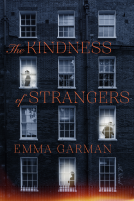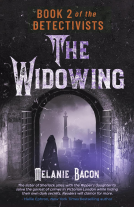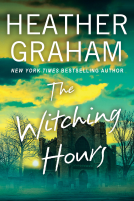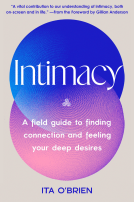
Death of a Heretic
by Peter Tremayne
This title was previously available on NetGalley and is now archived.
Send NetGalley books directly to your Kindle or Kindle app
1
To read on a Kindle or Kindle app, please add kindle@netgalley.com as an approved email address to receive files in your Amazon account. Click here for step-by-step instructions.
2
Also find your Kindle email address within your Amazon account, and enter it here.
Pub Date Aug 02 2022 | Archive Date Jul 31 2022
Talking about this book? Use #DeathofaHeretic #NetGalley. More hashtag tips!
Description
The suspicious death of a foreign bishop brings trouble to Sister Fidelma and the kingdom of Muman.
Ireland. AD 672. The abbey of Muman at Imleach Iubhair is being renovated when its guests' hostel burns to the ground. There is one fatality: Bishop Brodulf of Luxovium, a distinguished visitor and cousin to the King of Franks. Sister Fidelma is asked by Abbot Cuán to investigate the unfortunate incident and soon finds that the bishop had been stabbed to death before the fire had even started.
Thrown into a world of treachery and jealousy, where religious beliefs are vehemently disputed, Fidelma and her companions, Eadulf and Enda, face a barrier of deceit. The abbey, a leading ecclesiastical teaching institution as well as a conhospitae, housing both men and women, is divided into factions. Can Abbot Abbot Cuán trust Prioress Suanach, who is in charge of the sisterhood? Can the professors trust each other as well as their students? Moreover, can suspicion be levelled at the builders working on the abbey under their dominant Master Builder, Sítae? As more deaths follow, Fidelma must use her wit and ingenuity to unravel the complexities of this intricate mystery.
Available Editions
| EDITION | Other Format |
| ISBN | 9780727889669 |
| PRICE | $29.99 (USD) |
| PAGES | 336 |
Average rating from 12 members
Featured Reviews
A really good read full of history, danger and intrigue. I loved the storyline and the setting. It was such a compelling read that was very well researched.
 Amy O, Librarian
Amy O, Librarian
When a foreign bishop visiting an Irish monastery dies in a fire, the fear of international repercussions arises. But when evidence turns up showing the bishop was dead before the fire was set, it is fortuitous that Sister Fidelma happens to be in the neighborhood.
A judge trained in 6th Century Irish law, Sister Fidelma teaches readers of Peter Tremayne's series about religion and law in the years before Christianity completely buried Druidism and invaders' penchant for punishment killed the Irish system of restitution.
Tremayne is a talented writer who creates memorable characters and leaves readers with a lot to ponder.
Two beloved characters in this long running series of Sister Fidelma advocate of the Ancient Irish Breton Court and Brother Eadulf investigate to see about a fire at the Abbey of Muman. This will lead to murder of a visiting Bishop who had strict religious beliefs from Rome. There are plenty of suspicious characters from the Master Builder Sitae part of the Abbey’s renovation to the Prioress Suanach. Fidelma is very much a strong female character who learnings of the Law stand her in good stead when she listens, notices and uses all her wits to present her findings. The description of Ancient Ireland with all its factions and religious politics are well presented and leave you well embedded in this enthralling story.
I received a free copy of this book from the publisher and Netgalley in exchange for an honest review.
 Eric B, Reviewer
Eric B, Reviewer
I have read with enjoyment each entry in this series since it began in 1994. I relish the way in which the author envelops the mystery genre with medieval history, controversy in the early Christian Church and his love of languages.
However, I found this, the thirty second novel following the career and investigations of Sister Fidelma, slightly less to my taste. Partly this is due to the writing which is at times unduly repetitious, with some infelicitous phrasing. In part it is because of the portrayal of the central character, who here is acting more like the noble Fidelma of Cashel, haughty, imperious and impatient and decidedly not treating her husband Eadulf as a "co-equal", rather than like "Sister" Fidelma.
The plot, too, is rather static. There are endless rounds of questions which seem to get nowhere until Fidelma has a huge inspiration late on. There are a few clues to help the reader, and we all have to wait until the dramatic revelations of the final chapter for full enlightenment. The biggest clue, in some ways, is in the book's title.
I wonder what the average reader makes of the differences in the Celtic and Roman Churches, the extensive use of Latin and Irish, and of the complexities of early medieval European history. I find the debates on Pelagianism and the Arian controversy, the Church Councils, the infighting of the Merovingian dynasty, interesting as they are all areas of which I have some knowledge and understanding, but will other readers spend a lot of time "googling" in order to fully appreciate all that goes on here?
I find now and again that the extended explanations of customs, words and phrases can be irritating and condescending as well as intrusive in the narrative flow. At times the leisurely plot ground to a halt because of this.
For new readers, this is not the best place to start, for devotees like me, it is a little disappointing. However, even on a bad day, this series is still a beacon of light and enlightenment, a joy in a world beset by mediocrity.
Thank you to NetGalley and Severn House (Canongate Books) for the digital review copy.
 Librarian 431790
Librarian 431790
Sister Fidelma's mysteries are always a travel in a remote and not well know age and in the Celtic Christianity.
I think I learn a lot and always had fun.
The well researched and vivid historical background, the fleshed out and interesting characters, the solid mystery that kept me guessing: I loved this things and I found this one of the best in this series.
Highly recommended.
Many thanks to the publisher and Netgalley for this ARC, all opinions are mine
Irish law vs Roman Law
I found this story totally fascinating. I have always been drawn to the old laws of Ireland. To see the accepted tales of St Patrick’s turned on its head, to realize the way Christianity has been influenced down through the ages, is inspiring.
This seventh century story has us in Ireland with a murder—and the solving of.
Into this mess comes Sister Fidelma of Cashel. A visit from the Frankish dignitary, Bishop Brodulf, results in disaster. The Bishop is dead, killed in a fire, and a building master has disappeared. Although this is adequately explained.
The “law is based on compensation for the victim and rehabilitation for the perpetrator.” But Fidelma and her husband Brother Eardulf of Seaxmund’s Ham, are unsure as to whether this case invokes this law or one that transcends this. After all the Bishop we are told “came here with the explicit authority of the Frankish king, Clotaire.” If the latter is the case, if “there is a whisper of a fault, then Clotaire would lose no time in demanding compensation.”
“The task of the abbey is to make sure that everything has been done that could have been done to save Bishop Brodulf from perishing in the flames. Otherwise, it might lead to a dispute involving the two kingdoms that could escalate into war.”
So much rides on a clear head and clear questions. The judgement will come, given by Fidelma, a dálaigh, investigating the death in the abbey of a visitor.
A Severn House ARC via NetGalley. Many thanks to the author and publisher.
Please note: Quotes taken from an advanced reading copy maybe subject to change
(Opinions expressed in this review are completely my own.)
 Lisa S, Reviewer
Lisa S, Reviewer
I have read and enjoyed most of this delightful and different series about Sister Fidelma, a 6th century Irish legal scholar, who solves a mystery in each book. Sister Fidelma is a likeable, clever character who always solves the crimes with clarity and precision, and the descriptions of ancient Ireland are well-researched, and fascinating. I especially like the intricacies of the Celtic legal system, and the ancient theology.
In this story, Fidelma and her husband Eadulf are staying at the Abbey of Imleach Lubha, where they have to solve the mystery surrounding Bishop Brodulf's death. Bishop Brudolf was there to see how the Venerable Breas taught his students, and to study the different theologies. He was also of noble Burgundian birth, and a close cousin of the Burgundian King. Fidelma has to find out who murdered him, and why. Could it be anything to do with his dislike of the Abbey's following of the teachings of Pelagius, and their dislike of the Roman theology? Sister Fidelma has to walk through a minefield of intrigue, scandal and romances, as she puts her case together.
This tale moves at a slow pace, and it is not an exciting story - more of a cosy mystery. However, I didn't mind that, and I enjoyed the theological arguments, and church history.
I received this free ebook from NetGalley in return for an honest review.
 Elizabeth R, Librarian
Elizabeth R, Librarian
Peter Tremayne involves the reader in an intricate historical murder in ancient Ireland. Sister Fidelma, sister of King Colgu, has travelled to a monastery with a scholar, Breas, who has students from Europe, Britain and Ireland.
A visiting bishop from Burgundia is murdered as is a leading scholar who challenged him. Fidelma and her husband try to identify the murderers and the cause of the murders before it becomes a political and financial hot potato for the king and the abbot. Many interesting arguments about the state of Christianity in Ireland and the continent and changing attitudes about the rights of women within the Christian faith and in society play out. Very intriguing look at Christianity of the time and court intrigues. Read and enjoy.
 Shirley W, Reviewer
Shirley W, Reviewer
Death of a Heretic
672 A.D. Abbey of Inleach Iubhair
When Sister Fidelmas hears about a fatal fire at Imleach Iubhair Abbey, she, husband Eadulf, and their warrior companion Enda go there to investigate. Bishop Brodulf was visiting the abbey from the Kingdom of Burgundia to find out why the church was not obeying the decisions of the church councils of the eastern church in Rome and Constantinople, following instead the ancient teachings of Pelagus, who had been branded a heretic by the Roman church.
The bishop had died in a fire at one of the old wooden structures. Such incidents were not uncommon, but when Fidelmas investigates the scene she suspects he was murdered. She is invited by the abbot find the guilty party, with full reign to question everyone at the abbey. The bishop had ruffled the feathers of a number of people for various reasons, so the suspect list was long.
In the tradition of Ellis Peters’ Brother Cadfael historical mysteries and Umberto Echo’s Peter Tremayne’s Sister Fidela novels immerse the readers in a long ago time and place. The societal, educational, geographical, political, and religious systems of seventh century Ireland come to life. The look into the everyday workings of the abbey is fascinating, as well as a detailed history of the early Christian church.
Readers who liked this book also liked:
James McBride
General Fiction (Adult), Historical Fiction, Literary Fiction


















